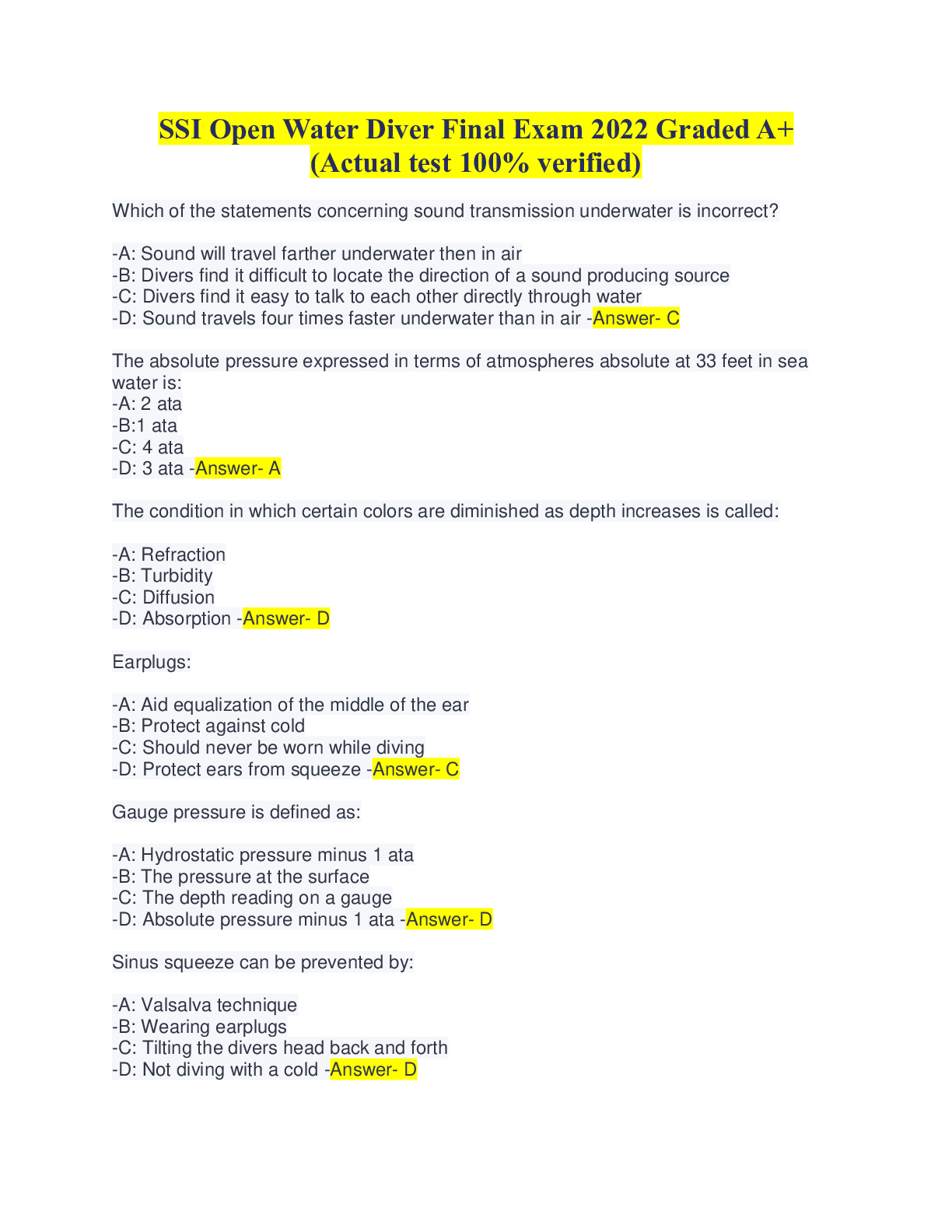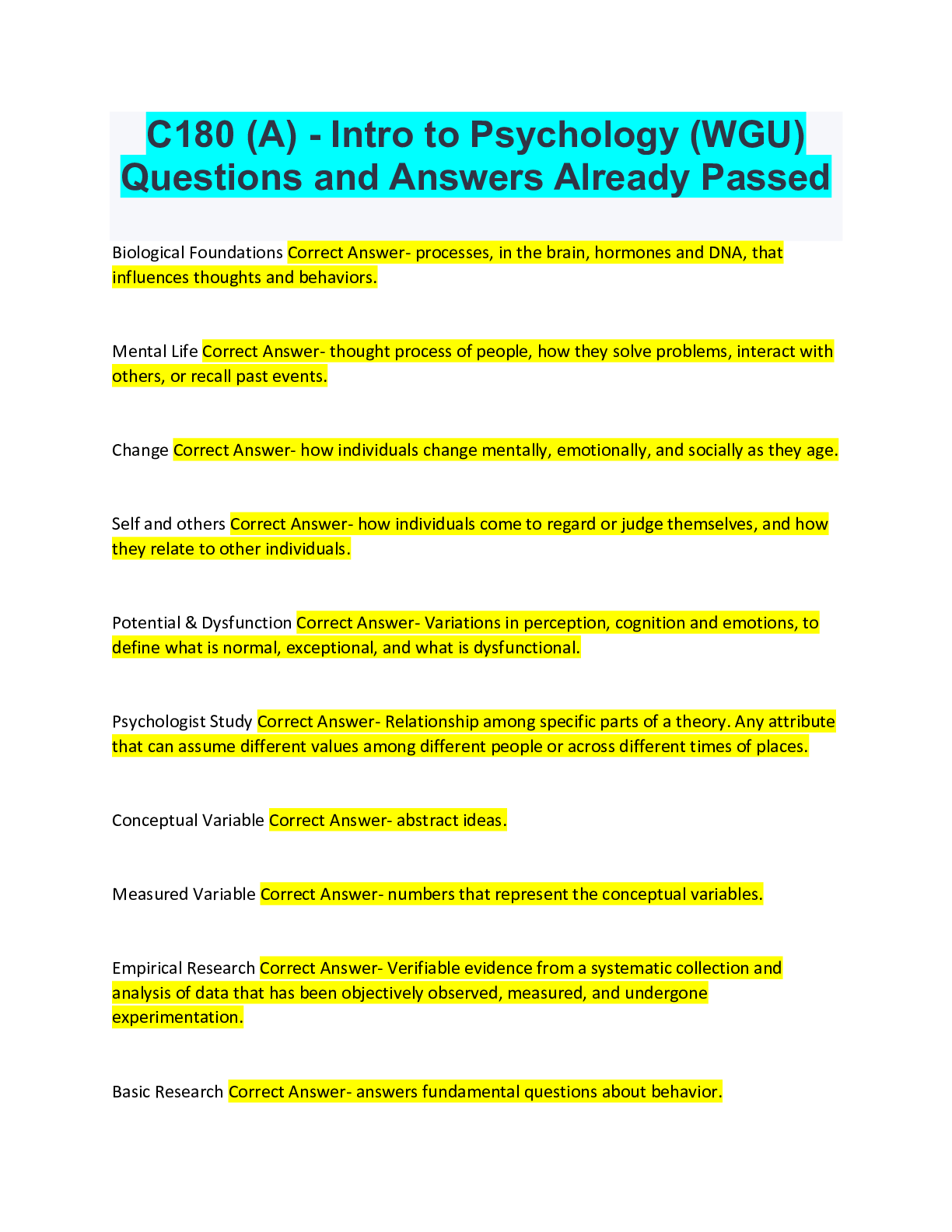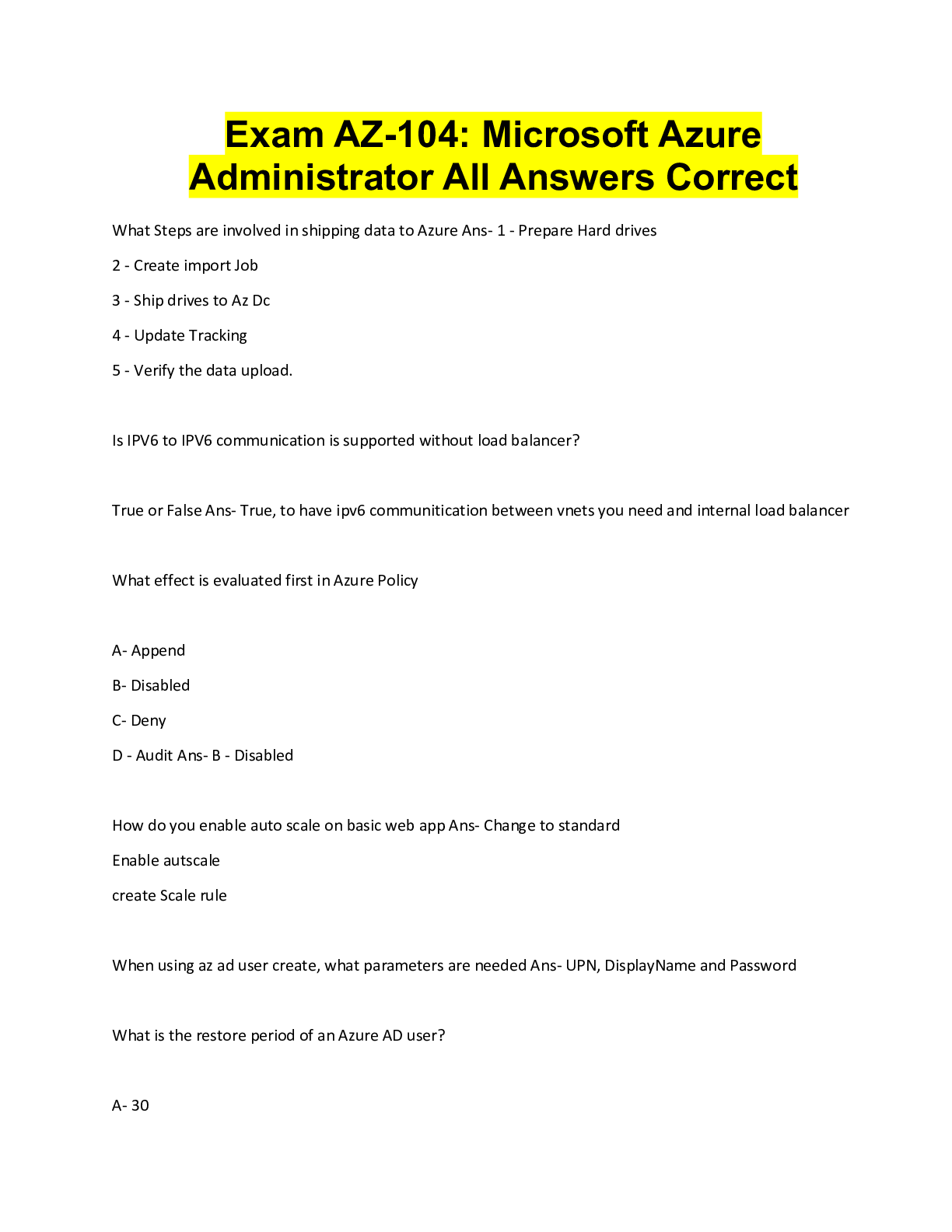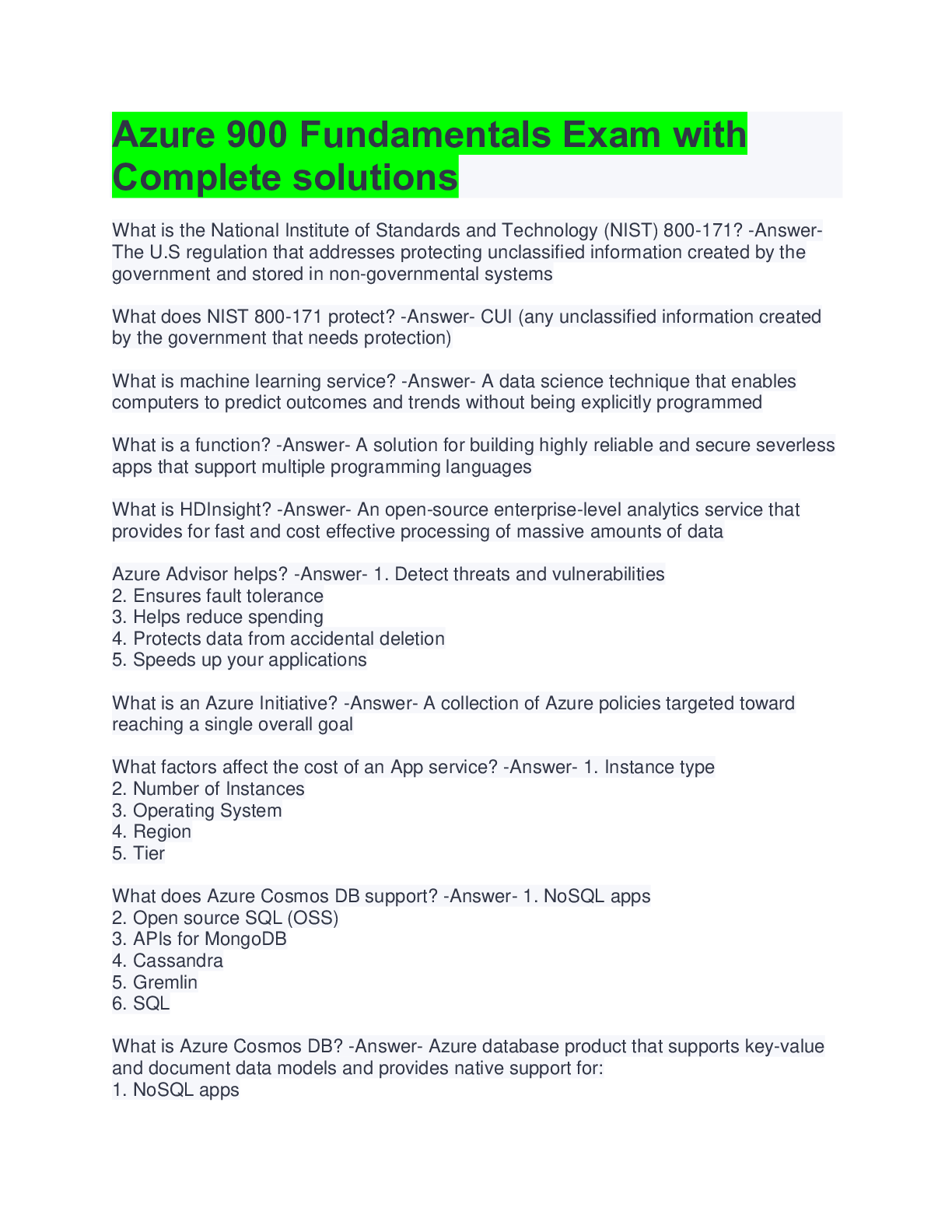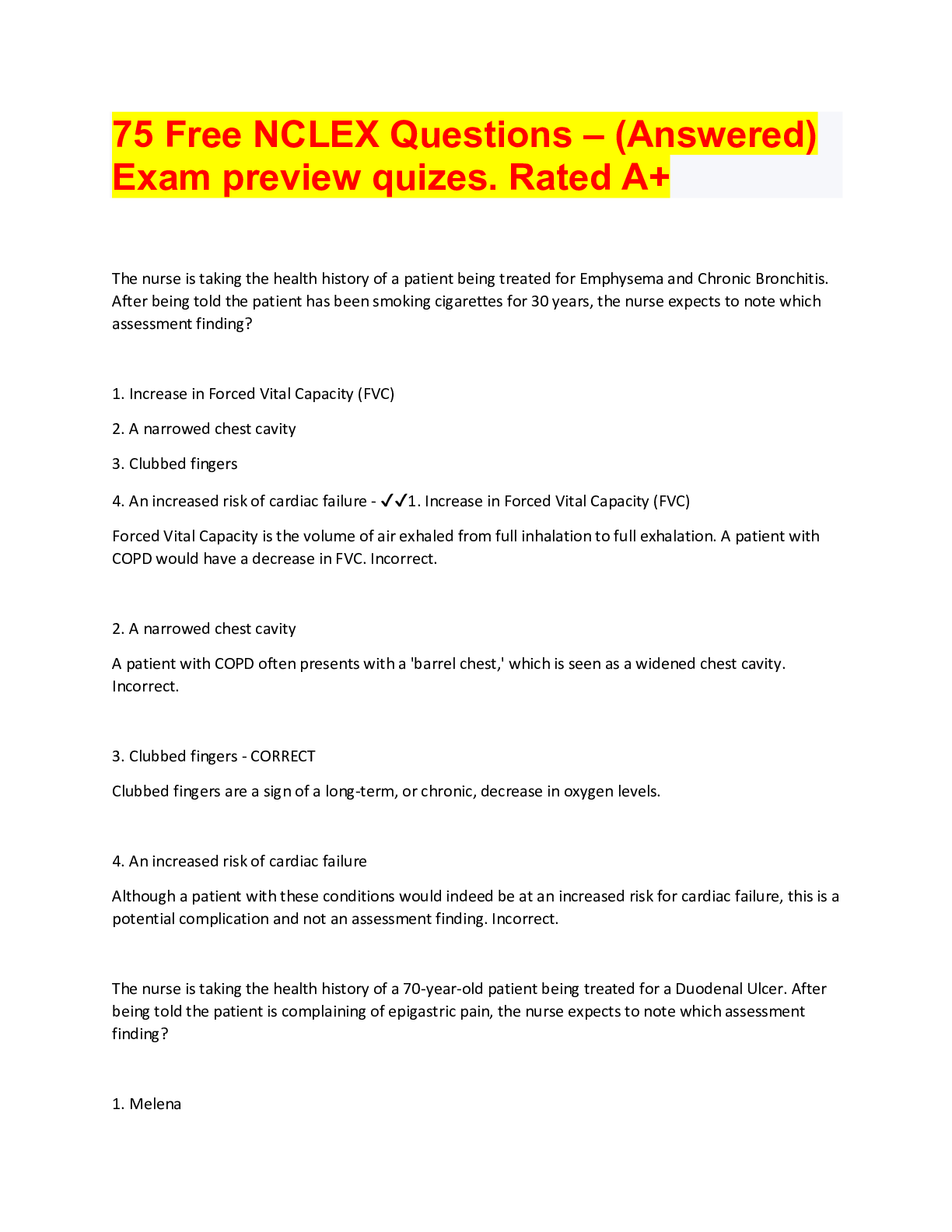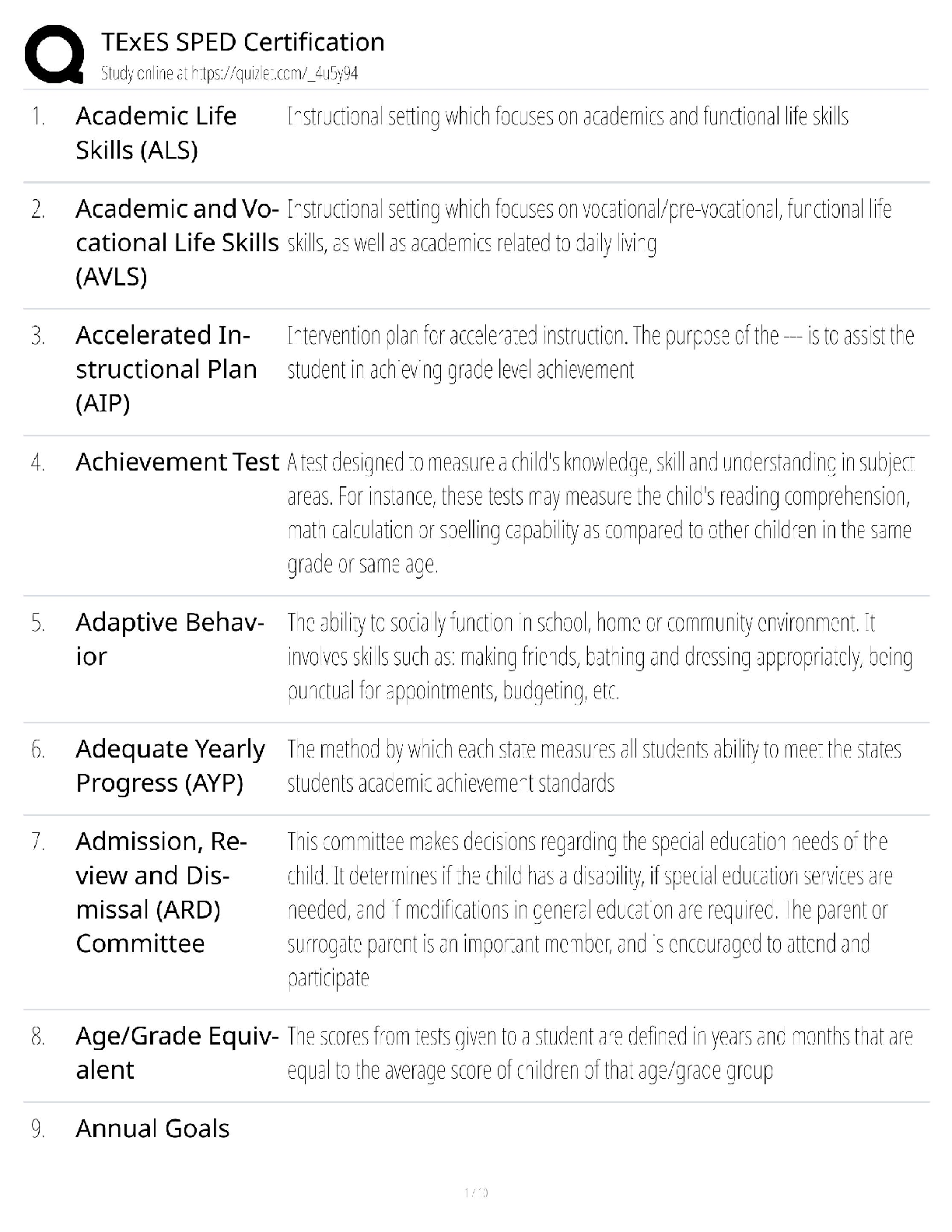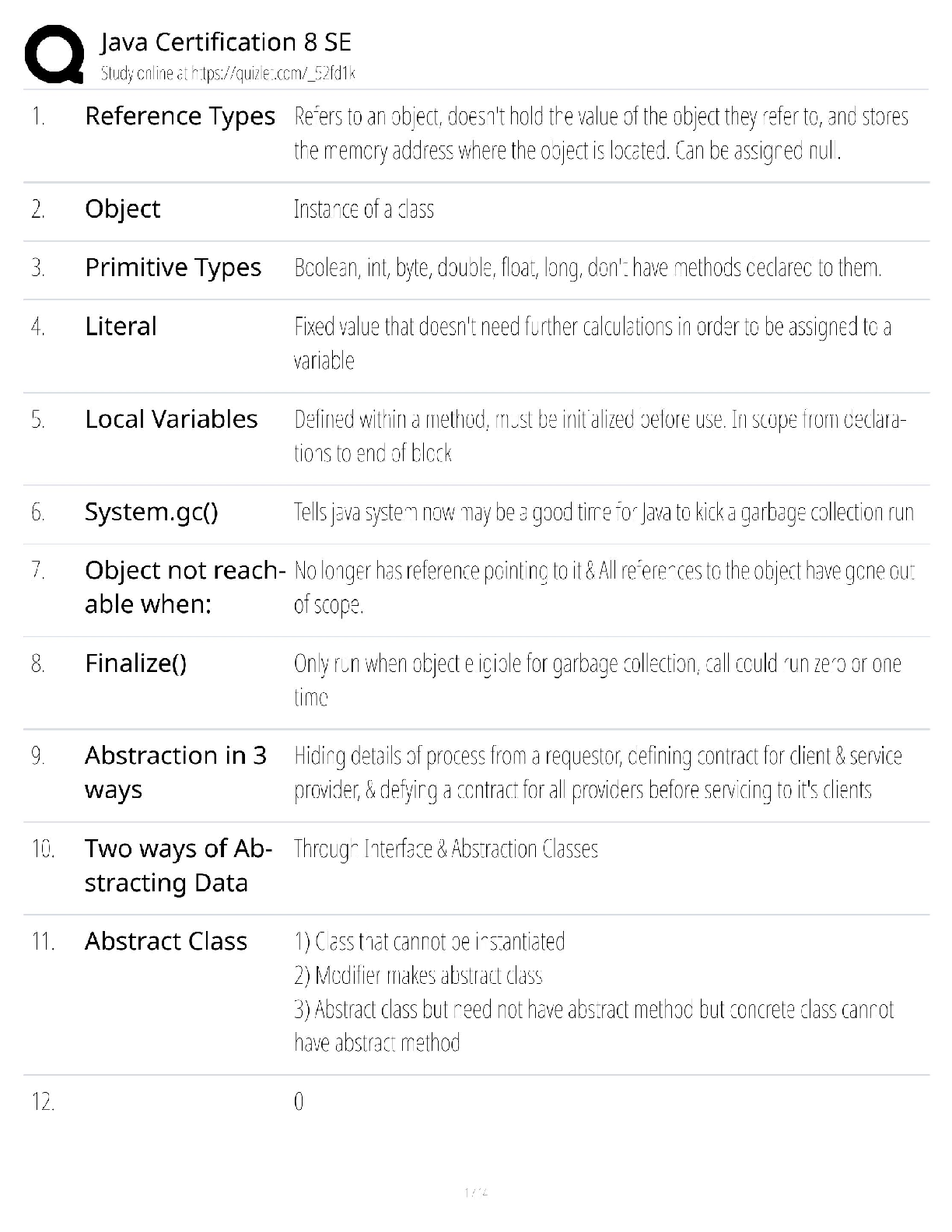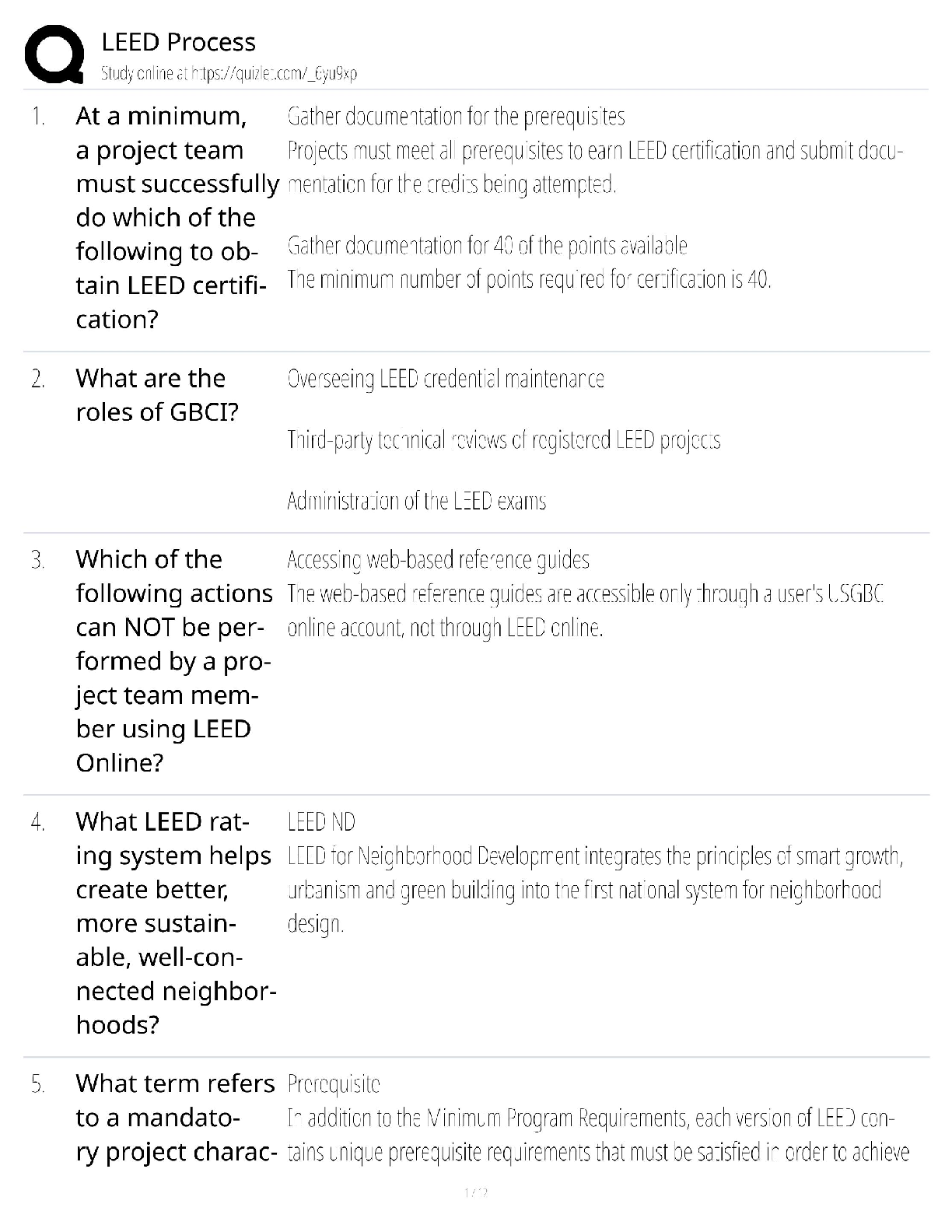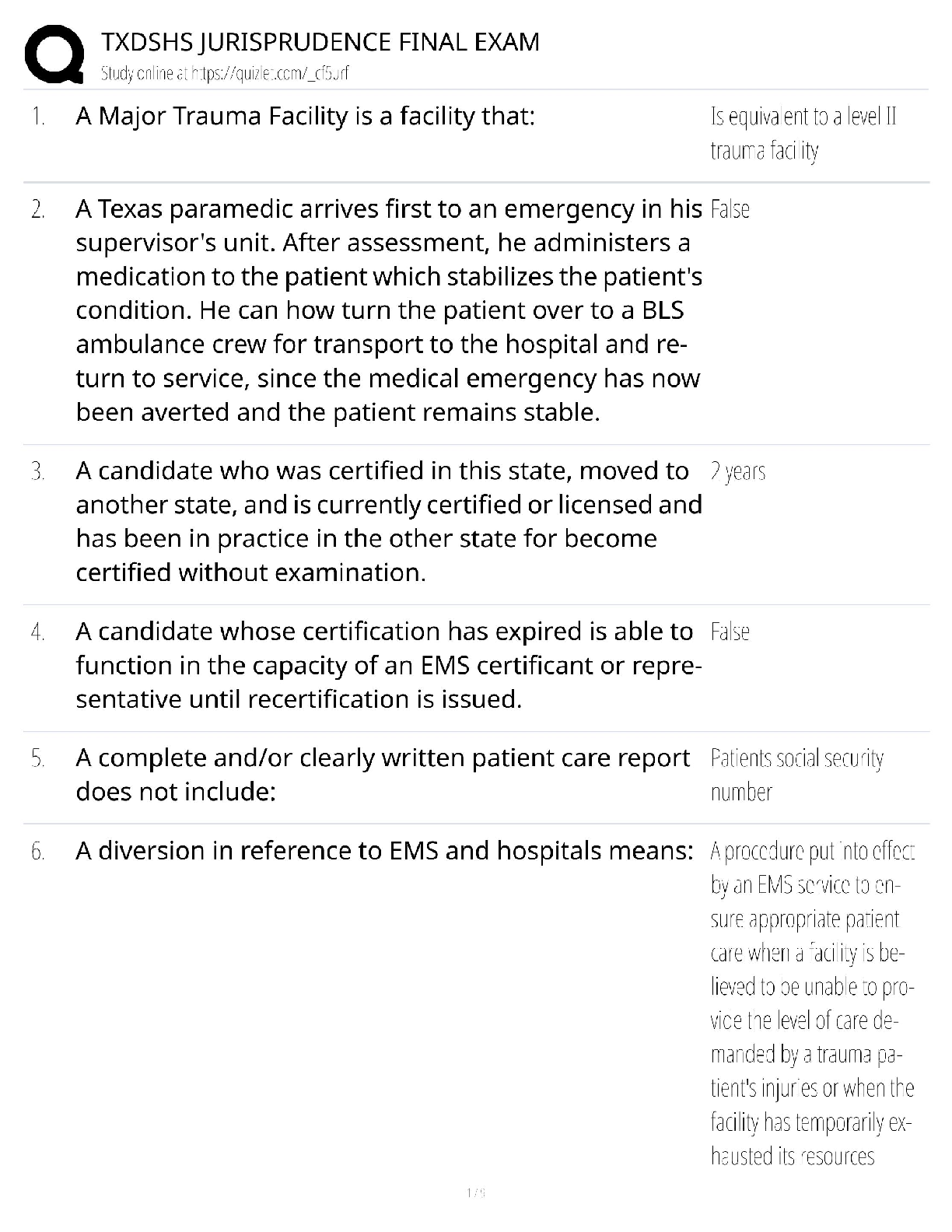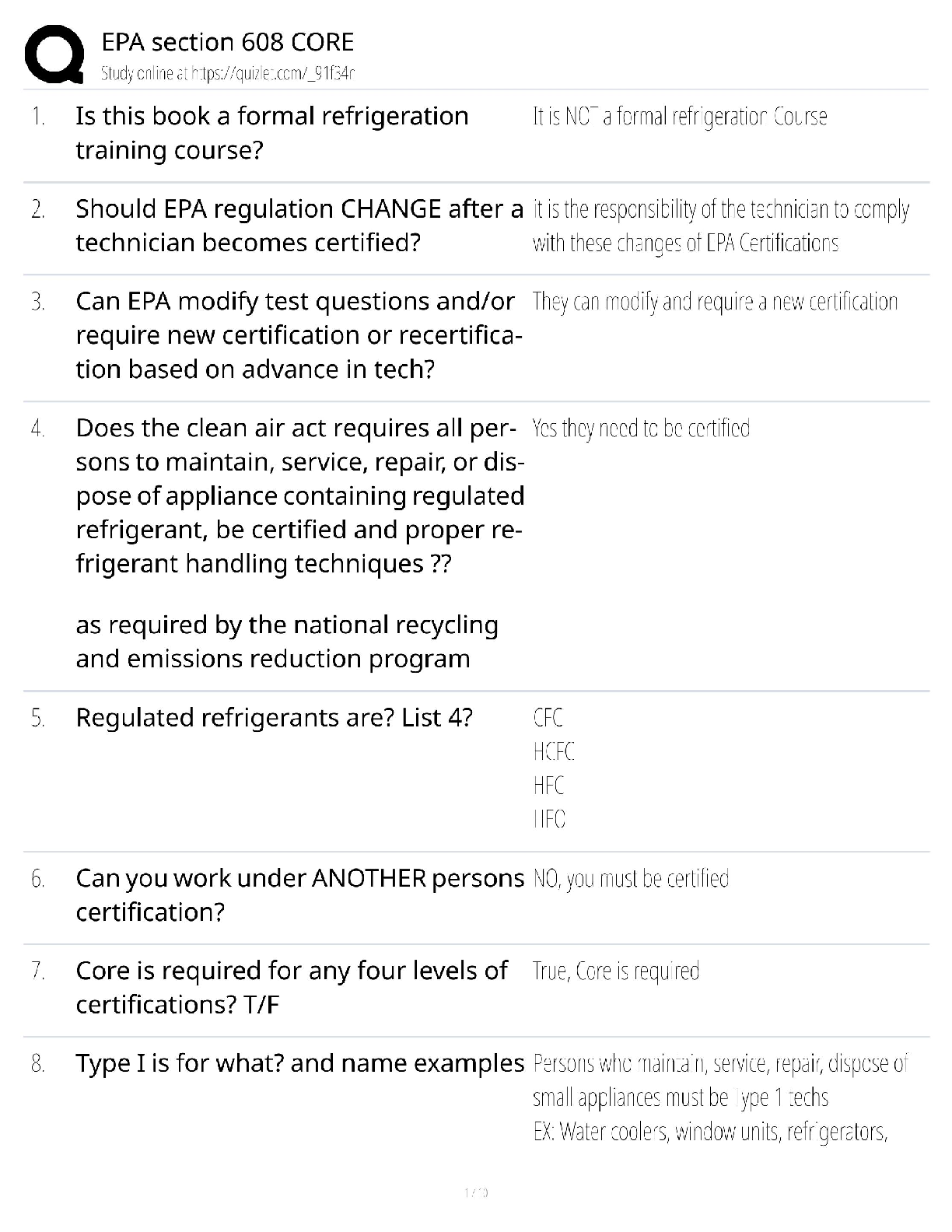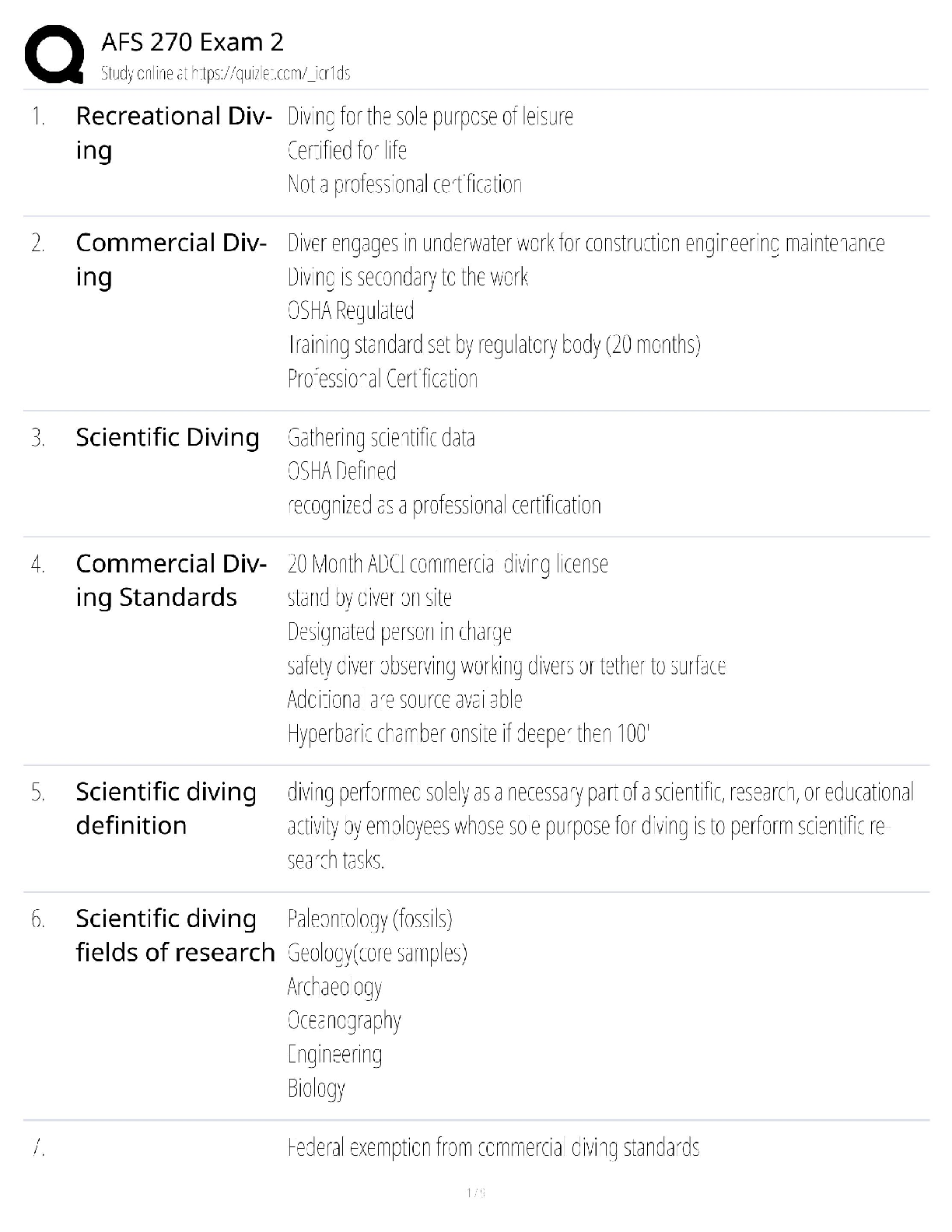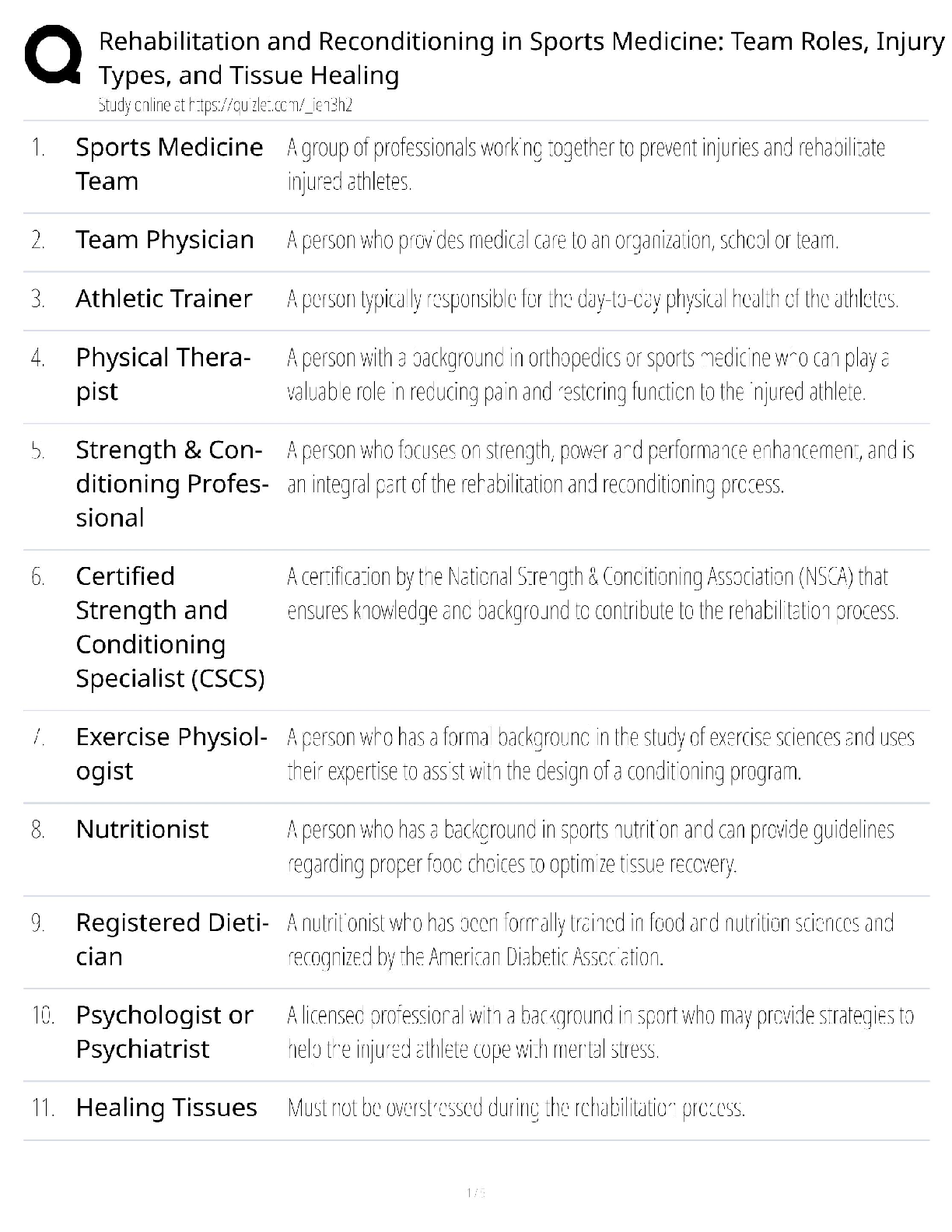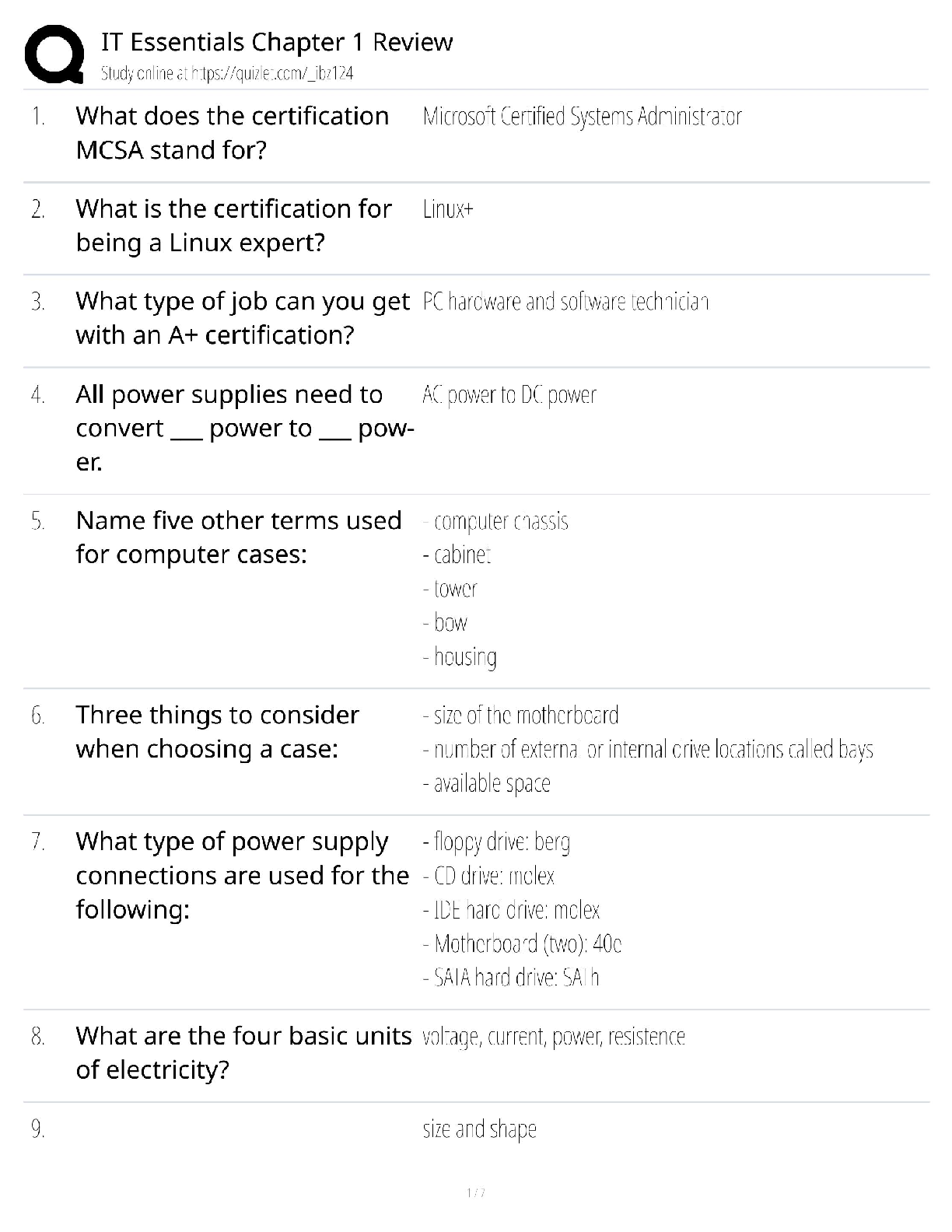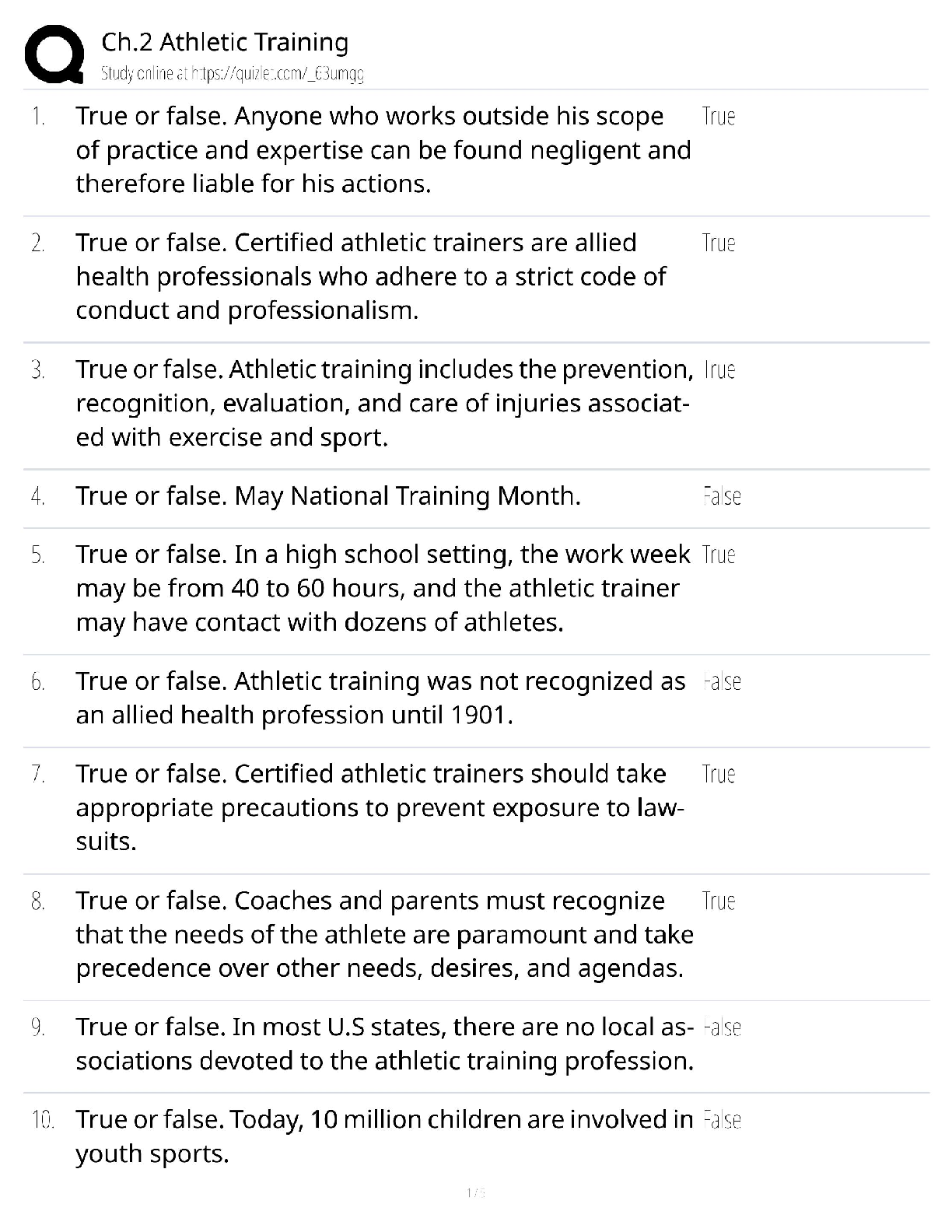Medicine > QUESTIONS & ANSWERS > NASM CPT ALL POSSIBLE QUESTIONS AND ANSWERS 2022;SOLVED 100% (All)
NASM CPT ALL POSSIBLE QUESTIONS AND ANSWERS 2022;SOLVED 100%
Document Content and Description Below
NASM CPT ALL POSSIBLE QUESTIONS AND ANSWERS 2022; SOLVED 100% Name the structures that make up the lumbo-pelvic-hip complex (LPHC). -Answer- Lumbar spine, pelvic girdle, abdomen, and hip joint ... Dysfunction within the connective tissue of the kinetic chain that is treated by the body as an injury, initiating this repair process. -Answer- Cumulative injury cycle Name four core-strength exercises. -Answer- Ball Crunch, Back Extensions, Reverse Crunch, Cable Rotations The type of flexibility training that applies gentle force to an adhesion, altering the elastic muscle fibers from a bundled position to a straighter alignment with the direction of the muscle and/or fascia. -Answer- Self-myofascial release Exercises in the core-stabilization level are identified through these characteristics. -Answer- They involve little motion through the spine and pelvis What are four common ways a stressor causes breakdown or injury? -Answer- Stress fractures, muscle strains, joint pain, emotional fatigue Name four core-stabilization exercises. -Answer- Marching, Floor Bridge, Floor Prone Cobra, Prone Iso-abs Law stating that soft tissue models along the lines of stress. -Answer- Davis's law Referred to as a co-contraction of global muscles, such as the rectus abdominis, external obliques, and quadratus lumborum. -Answer- Bracing It is critical that the core training program is designed to achieve these three functional outcomes in the right order. -Answer- 1. Intervertebral stability, 2. Lumbo-pelvic stability, 3. Movement efficiency. What are the proper backside mechanics during sprinting? -Answer- Ankle plantar flexion, knee extension, hip extension, and neutral pelvis What are the proper frontside mechanics during sprinting? -Answer- Ankle dorsiflexion, knee flexion, hip flexion, and neutral pelvis The ability to accelerate, decelerate, stabilize, and change direction quickly, while maintaining proper posture. -Answer- Agility The ability to react and change body position with maximum rate for force production, in all planes of motion and from all body positions, during functional activities. -Answer- Quickness The ability to move the body in one intended direction as fast as possible. -Answer- Speed Name four core-power exercises. -Answer- Rotation Chest Pass, Ball Medicine Pullover Throw, Front Medicine Ball Oblique Throw, Soccer Throw The ability of the body to produce high levels of force for prolonged periods of time. -Answer- Muscular endurance What is a component of core-power exercises that make them easy to identify? -Answer- Explosive movements with medicine balls Name five balance-stabilization exercises. -Answer- Single-leg Balance, Single-leg Balance Reach, Single-leg Hip Internal and External Rotation, Single-leg Lift and Chop, Single-leg Throw and Catch Name five balance-strength exercises. -Answer- Single-leg Squat, Single-leg Squat Touchdown, Single-leg Romanian Deadlift, Step-up to Balance, Multiplanar Lunge to Balance Name three balance-power exercises. -Answer- Multiplanar Hop with Stabilization, Multiplanar Single-leg Box Hop-up with Stabilization, Multiplanar Single-leg Box Hop-down with Stabilization What are four plyometric-stabilization exercises? -Answer- SQUAT JUMP WITH STABILIZATION, BOX JUMP-UP WITH STABILIZATION, BOX JUMP-DOWN WITH STABILIZATION, MULTIPLANAR JUMP WITH STABILIZATION. Name four plyometric-strength exercises. -Answer- Squat Jump, Tuck Jump, Butt Kick, Power Step-up Name three plyometric-power exercises. -Answer- Ice Skater, Single-leg Power Step-up, Proprioceptive Plyometrics Exercises that use quick powerful movements involving an eccentric action immediately followed by an explosive concentric contraction. -Answer- Plyometric training Body position progressions in balance training. -Answer- TWO-LEG STABLE, SINGLE-LEG STABLE, TWO-LEG UNSTABLE, SINGLE-LEG Give examples of chest exercises used in the Stabilization Level of the OPT model. -Answer- Ball Dumbbell Chest Press, Push-up, Ball Push-up: hands on the ball, Standing Cable Chest Press What are the two techniques used in corrective flexibility according to the integrated flexibility continuum? -Answer- SMR (self-myofascial release) and static stretching [Show More]
Last updated: 3 years ago
Preview 1 out of 71 pages
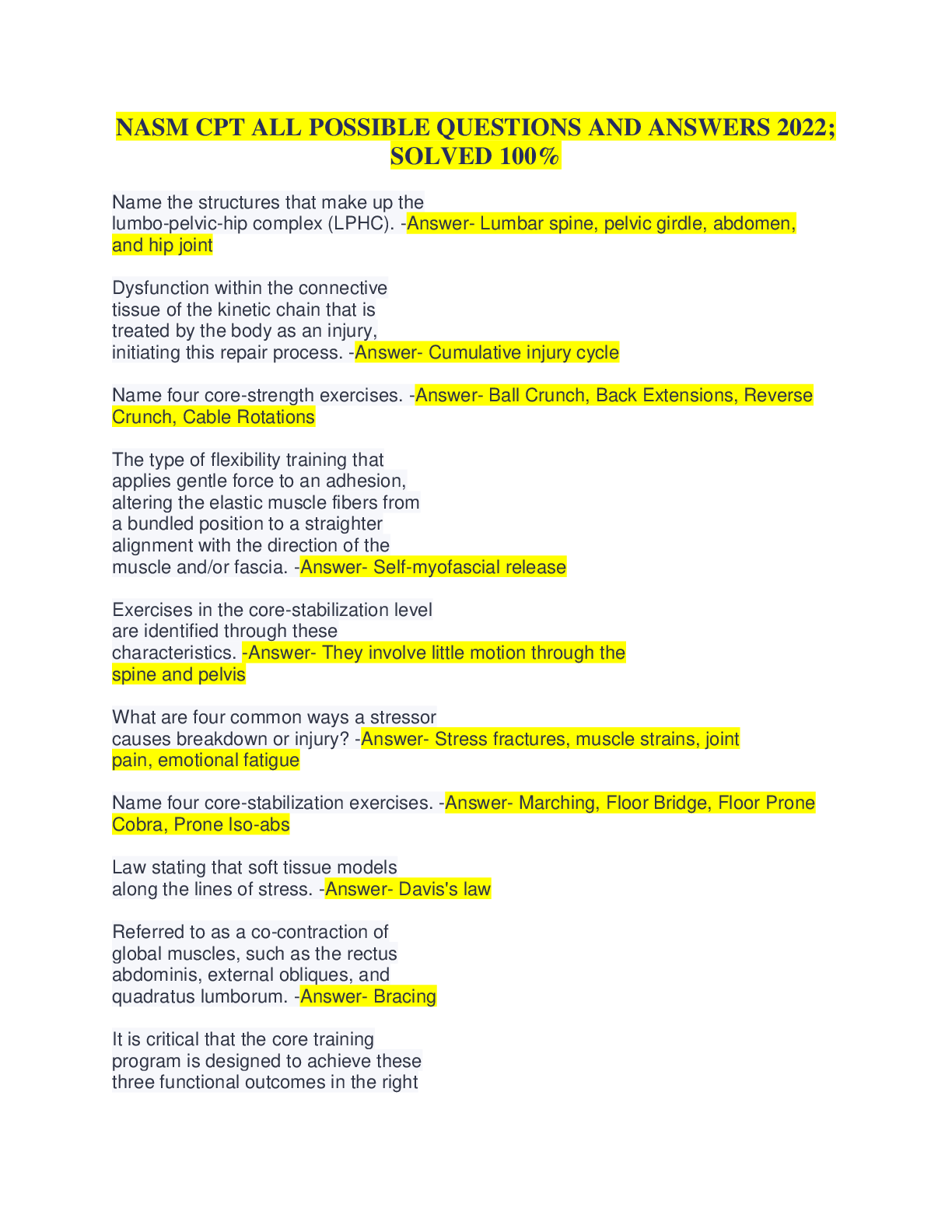
Buy this document to get the full access instantly
Instant Download Access after purchase
Buy NowInstant download
We Accept:

Also available in bundle (1)
Click Below to Access Bundle(s)

NASM CPT BUNDLED EXAMS WITH COMPLETE SOLUTION;Everything required for you to pass is here
NASM CPT PRACTICE TEST Questions with Complete Solutions NASM CPT Final Exam Practice Questions and Answers(Solved correctly) Nasm CPT Final Exam Study Guide with Complete Solution NASM CPT F...
By Excel 3 years ago
$16
7
Reviews( 0 )
$13.00
Can't find what you want? Try our AI powered Search
Document information
Connected school, study & course
About the document
Uploaded On
Sep 13, 2022
Number of pages
71
Written in
All
Additional information
This document has been written for:
Uploaded
Sep 13, 2022
Downloads
0
Views
502

